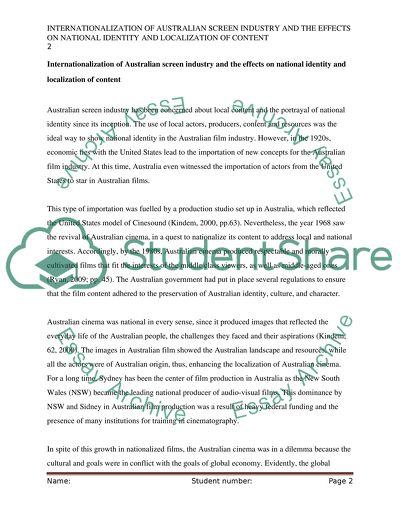Cite this document
(“How is internationalisation transforming the nature of the Australian Essay”, n.d.)
How is internationalisation transforming the nature of the Australian Essay. Retrieved from https://studentshare.org/visual-arts-film-studies/1601583-how-is-internationalisation-transforming-the-nature-of-the-australian-screen-industry-and-what-tensions-does-this-create-for-local-content-and-the-representation-of-national-identity
How is internationalisation transforming the nature of the Australian Essay. Retrieved from https://studentshare.org/visual-arts-film-studies/1601583-how-is-internationalisation-transforming-the-nature-of-the-australian-screen-industry-and-what-tensions-does-this-create-for-local-content-and-the-representation-of-national-identity
(How Is Internationalisation Transforming the Nature of the Australian Essay)
How Is Internationalisation Transforming the Nature of the Australian Essay. https://studentshare.org/visual-arts-film-studies/1601583-how-is-internationalisation-transforming-the-nature-of-the-australian-screen-industry-and-what-tensions-does-this-create-for-local-content-and-the-representation-of-national-identity.
How Is Internationalisation Transforming the Nature of the Australian Essay. https://studentshare.org/visual-arts-film-studies/1601583-how-is-internationalisation-transforming-the-nature-of-the-australian-screen-industry-and-what-tensions-does-this-create-for-local-content-and-the-representation-of-national-identity.
“How Is Internationalisation Transforming the Nature of the Australian Essay”, n.d. https://studentshare.org/visual-arts-film-studies/1601583-how-is-internationalisation-transforming-the-nature-of-the-australian-screen-industry-and-what-tensions-does-this-create-for-local-content-and-the-representation-of-national-identity.


